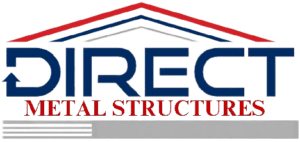
Frequently Asked Questions
Answers to your most common metal building questions. Want to just talk to a real person? No problem. Call us now!
12-gauge steel versus 14-gauge steel – what’s the difference?
The thickness of steel is measured by gauge. These two terms have an inverse relationship, meaning that the lower the gauge is, the thicker the steel is. As such, 12-gauge steel is actually thicker than 14-gauge steel.
When it comes to steel, the thickness is directly related to strength. When used for the framework of a building, as it is in metal buildings, thicker steel means a stronger overall building with increased weather resistance. It also means added property value thanks to the benefits added by thicker steel. The trade-off is the price. Lower gauge steel is more expensive. To apply this concept to 12- and 14-gauge framing, you can add strength to your building by opting for 12-gauge steel, while selecting 14-gauge framing will be less expensive.
For larger buildings and those located in harsher climates that receive heavy snow and intense wind, thicker steel is recommended. That being said, 14-gauge framing is a great option for most metal building applications.
What makes vertical roofs special?
Vertical roofs are the stronger roof design available. The extra strength and weight-bearing capacity are possible thanks to the vertical roof panels used. For those living in areas that experience high winds, heavy snow, snow accumulation, torrential rain, and other challenging weather events, vertical roofs are the recommended roof style!
Are metal buildings customizable?
The short answer is yes! The more detailed answer is that you have control over nearly every aspect of your metal building. From integral structure features such as framing thickness, roof style, and anchors to other elements such as colors, doors, windows, and more, Direct Metal Structures allow you to customize it all.
How tall can my steel building be?
Metal buildings come in standard sizes that feature in the 12 to 20-foot height range. Taller buildings are available, including up to 40 feet without special considerations. Anything taller than 40 feet will require more custom work and a specialized quote.
How do I prepare for installation?
Before your metal building can be delivered and installed, there are a few tasks that should be completed. Some common items on your checklist will be checking for local building permits, applying for and receiving those permits, clearing the site, and leveling the site. Other preparations may be required depending on your situation, so check with the experts at Direct Metal Structures for more information.
What do pre-fabricated buildings cost?
The answer to this question is anything but one-size-fits-all. Each building is unique in terms of size, location, customizations, and more. All of these factors influence the price of a building. Because of the incredible variety offered by Direct Metal Structures, giving an exact price range is truly impossible.
For the most accurate estimate possible, call Direct Metal Structures to discuss the features unique to your needs. These can include the dimensions, accessories, installation location, certifications, and more.
How is a certified steel building different from a non-certified steel building?
There are numerous benefits and changes related to certification, but the primary difference is this—certified steel buildings are stronger and designed to withstand harsher weather events.
To be more specific, certified metal buildings are engineered to meet pre-established ratings for snow loads and wind speeds. This is achieved through the addition of strength related features, such as thicker framing, additional bracing, and more. Some localities, especially in areas that experience substantial inclement weather, require that any new metal building be certified.
How can I finance my metal building?
Direct Metal Structures provide two financing options, giving you the flexibility to choose the route that is best for you and your situation. You have the choice between a traditional financing program and a rent-to-own option, both of which feature a quick and easy application process!
Do all metal buildings require a building permit?
No, they don’t! In fact, many metal buildings will not require a building permit. In some areas of the country, though, building permits are required before you install your new metal building. That’s why it is important to research thoroughly before installing your building—different places have different rules.
If your location does require building permits, it’s vital to apply for and receive the necessary permits before you begin the installation. Failure to do so can lead to serious consequences.
How lengthy are lead times?
This varies from building to building, but in general lead times are 2 to 6 weeks from the day your are ready for install.
Can I buy a metal building kit?
Yes, Direct Metal Structures offer comprehensive metal building kits that allow you to install your top-quality metal building yourself. All the necessary components are included for the installation to go smoothly, and you can even save a bit of money with this option.
Why should I buy from Direct Metal Structures?
The answer to this question could stretch on for quite some time. After all, Direct Metal Structures is the go-to dealer of metal buildings in the United States. That’s a big deal!
Not only does Direct Metal Structures offer the best metal buildings on the market, but it also provides unbeatable customer service. To experience the Direct Metal Structures difference, call us today.
MEMORIAL
DAY
SALE
Big Savings on Metal Buildings
Up to 35% Off | Offer Ends on June 1, 2025
~ Made in the USA Metal Buildings ~ Exclusive Specials ~

